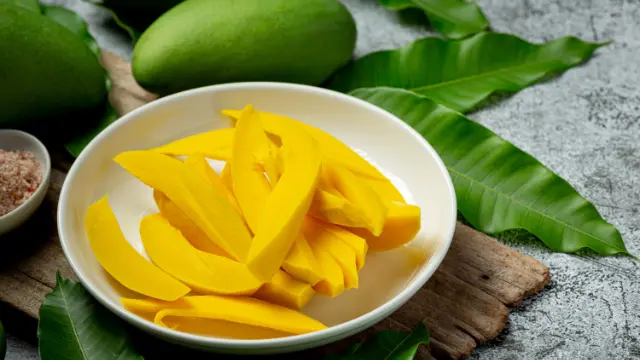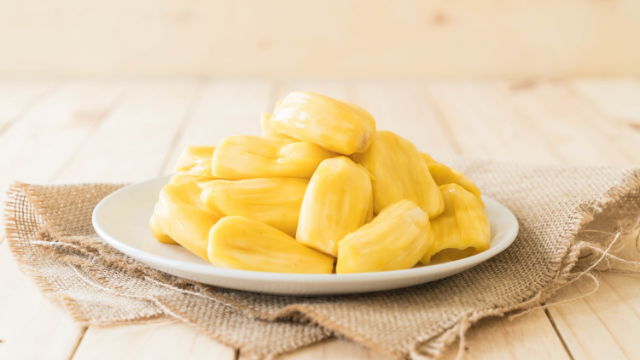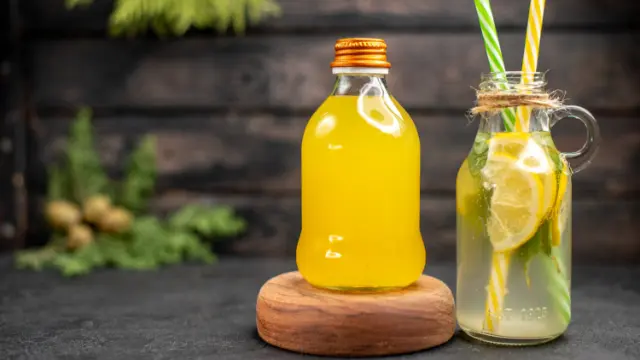How to Clean Strawberries Easily
Washing Strawberries Technique
Strawberries are a delicious summer fruit loved by many, but cleaning them properly is crucial for food safety. The Environmental Working Group consistently ranks strawberries high on their "Dirty Dozen" list, which highlights fruits and vegetables with significant pesticide contamination. Learning how to clean strawberries effectively can help reduce potential health risks and ensure you enjoy these sweet berries at their best.
Washing strawberries requires careful technique to preserve their delicate texture while removing dirt, potential chemicals, and bacteria. Whether you're preparing strawberries for a fresh snack, smoothie, or dessert, understanding proper cleaning methods is essential for maintaining their quality and safety.
Key Takeaways
Cleaning strawberries removes pesticides and contaminants
Different washing techniques suit various needs
Proper cleaning extends strawberry freshness
Avoid harsh chemicals during washing
Gentle handling preserves berry quality
Why Cleaning Strawberries is Essential
Strawberries are a delicious and nutritious fruit that requires careful preparation before consumption. Removing pesticides from strawberries is crucial for maintaining your family's health and enjoying the best possible flavor. Understanding the importance of proper fruit cleaning tips can help you make more informed choices about your food preparation.
Cleaning Strawberries Safely
Fresh strawberries often carry hidden risks that aren't visible to the naked eye. Organic strawberry cleaning methods can significantly reduce potential health hazards associated with conventionally grown produce.
Understanding Pesticide Concerns
Conventionally grown strawberries frequently rank high on the Environmental Working Group's "Dirty Dozen" list due to pesticide contamination. Research shows that a single strawberry can contain multiple chemical residues that may pose health risks.
Some chemicals can remain on fruit even after initial washing
Organic farming practices reduce chemical exposure
Removing Dirt and Contaminants
Strawberries travel long distances and pass through multiple handling stages before reaching your kitchen.:
Food Safety Considerations
Proper cleaning eliminates up to 98% of potential surface contaminants. Simple washing techniques can dramatically reduce health risks associated with consuming unwashed strawberries.
"Washing strawberries goes beyond improving their look—it’s essential for your health."
How to Clean Strawberries: Basic Method
Cleaning strawberries is a simple process that helps ensure food safety and remove potential contaminants. Properly rinsing strawberries can remove surface dirt, pesticide traces, and bacteria that may be on the fruit.
Add one tablespoon of baking soda to twelve cups of water and stir until fully dissolved. This basic technique works well for both strawberries and blueberries, making it a versatile cleaning approach for berry enthusiasts.
Use cool, clean water from the tap
Gently wash each berry under running water
Avoid soaking strawberries, as they can absorb excess water
When rinsing strawberries, use these key steps:
Place strawberries in a colander
Run cool water over the berries
Gently swirl the strawberries to make sure they're thoroughly rinsed.
Pat dry with clean paper towel
Remember that this basic cleaning method is most effective for fresh, store-bought strawberries. For berries with visible heavy dirt or from unknown sources, you might need more advanced cleaning techniques.
Advanced Cleaning Methods for Better Results
Beyond basic washing, strawberry enthusiasts can explore more sophisticated cleaning techniques to ensure maximum freshness and food safety. These advanced strawberry soaking methods go deeper than simple rinsing, targeting potential contaminants and preserving the delicate fruit's quality.
Vinegar Solution Method
Learning how to clean strawberries with vinegar provides an effective deep-cleaning approach. The acidic properties of vinegar help eliminate bacteria and potential residues. To prepare the solution, combine 1 tablespoon of white vinegar with 12 cups of water.
Soak strawberries for 5 minutes
Gently swirl the berries in the solution
Rinse thoroughly with cool water
Pat dry with clean paper towels
Salt Water Cleaning Technique
Salt water offers another natural cleaning method for strawberries. The mild abrasive qualities help remove surface dirt and potential microscopic contaminants without damaging the fruit's delicate skin.
Mix one tablespoon of baking soda into twelve cups of water, stirring until it completely dissolves
Submerge strawberries for 2-3 minutes
Rinse with fresh cold water
Drain and dry completely
Baking Soda Wash Solution
When searching for how to clean strawberries with baking soda, you'll discover a gentle yet powerful cleaning method. Baking soda neutralizes potential pesticide residues while providing a safe cleaning environment for your fresh berries.
Mix one tablespoon of baking soda into twelve cups of water, stirring until it completely dissolves.
Soak strawberries for approximately 2 minutes
Rinse thoroughly with cool water
Air dry or use clean towels
Pro tip: Always handle strawberries gently during cleaning to prevent bruising and maintain their delicate texture.
" Home cooks and food enthusiasts should remember that clean strawberries are not just about appearance. By incorporating these cleaning strategies into your routine, you'll enjoy fresher, safer, and more delicious strawberries that are ready to be savored in countless recipes and snacks. Practice makes perfect when it comes to healthy strawberry preparation. Your taste buds and health will thank you for the extra care and attention. "
Hot Water Treatment for Extended Freshness
Prolonging strawberry freshness requires strategic cleaning techniques. The hot water treatment emerges as a powerful method for healthy strawberry preparation, helping preserve your favorite berries for longer periods.
Food scientists have discovered that a precise hot water bath can significantly reduce bacterial contamination and extend strawberry shelf life. The optimal temperature range sits around 125°F (51°C), which effectively eliminates harmful microorganisms without damaging the delicate fruit.
Hot Water Treatment Steps
Select ripe, unblemished strawberries
Heat water to exactly 125°F
Submerge strawberries for 30 seconds
Remove and immediately cool in ice water
Pat dry with clean paper towels
This technique provides multiple benefits for healthy strawberry preparation. The heat treatment destroys potential pathogens while maintaining the fruit's nutritional integrity and sensory qualities. Researchers have found this method can extend refrigerated strawberry freshness by several days.
A carefully managed hot water bath represents a simple yet effective strategy for preserving strawberry quality and safety.
When implementing this method, precision matters. Use a reliable kitchen thermometer to ensure water temperature remains consistent. Avoid overheating, which could compromise strawberry texture and flavor.
By integrating this hot water treatment into your food preparation routine, you'll enhance both the safety and longevity of your strawberries, reducing food waste and enjoying peak freshness.
Common Mistakes to Avoid When Cleaning Strawberries
Proper fruit cleaning tips are essential for maintaining the quality and safety of your strawberries. Many home cooks unknowingly make critical errors during healthy strawberry preparation that can compromise the fruit's flavor, texture, and longevity.
Understanding the most common pitfalls can help you preserve the delicate nature of these beloved berries. Let's explore the key mistakes to avoid during strawberry cleaning.
Premature Washing Before Storage
One of the most critical fruit cleaning tips is to avoid washing strawberries before refrigeration. Excess moisture creates an ideal environment for mold growth and accelerates spoilage.
Wait to wash until just before eating
Keep strawberries dry in storage
Store in a single layer to prevent crushing
Dangerous Cleaning Agents
During healthy strawberry preparation, never use soap, detergents, or harsh chemicals. These substances can penetrate the berry's delicate skin, leaving behind harmful residues and altering the fruit's natural taste.
Avoid household cleaners
Stick to water-based cleaning methods
Use gentle, food-safe techniques
Improper Drying Techniques
Wet strawberries are prone to rapid deterioration. Gentle pat-drying with clean paper towels or a soft cloth is crucial for maintaining the fruit's integrity. Improper handling or too much moisture can damage the berries and shorten their freshness.
Pro tip: Always handle strawberries with care to preserve their delicate structure and flavor.
Conclusion
Cleaning strawberries is a crucial step in healthy strawberry preparation that ensures both safety and flavor. The methods we've explored range from simple water rinsing to more advanced techniques using vinegar, salt, and baking soda solutions. Each approach offers unique benefits in removing potential contaminants and extending the fruit's freshness.
Understanding how to clean strawberries effectively can transform your culinary experience. Whether you're preparing a summer dessert or adding fresh berries to your morning breakfast, proper cleaning techniques protect you from pesticides and dirt while preserving the delicate texture and taste of these beloved fruits. The key is selecting a method that fits your specific needs and time constraints.
FAQ
Why is washing strawberries before eating them important?
Cleaning strawberries is crucial to remove potential pesticide residues, dirt, and harmful bacteria that can accumulate during growing, harvesting, and transportation. Thorough washing enhances food safety by lowering the risk of ingesting harmful contaminants.
What is the most basic method for cleaning strawberries?
The most basic method involves rinsing strawberries under cold running water. Gently run each strawberry under cool water, using your fingers to softly remove any visible dirt or debris. This method helps remove surface contaminants and is quick and easy to perform.
Is it safe to use hot water to clean strawberries?
Hot water treatment can be safe when done correctly. Use water heated to around 120°F (49°C) and soak strawberries for 30 seconds. This method can help eliminate mold spores and bacteria, potentially prolonging the freshness of the berries. However, be careful not to use water that's too hot, as it can damage the fruit.
What should I avoid when cleaning strawberries?
Avoid several common mistakes: do not use soap or harsh chemicals, do not pre-wash strawberries before storage (which can promote mold), and do not soak berries for too long. Always clean strawberries just before eating, and ensure they are thoroughly but gently dried to prevent moisture-related spoilage.
How long can I store strawberries after cleaning?
If cleaned and stored correctly, strawberries usually stay fresh for 3 to 5 days. For best results, store them in a single layer in a breathable container to prevent crushing and minimize moisture buildup.



